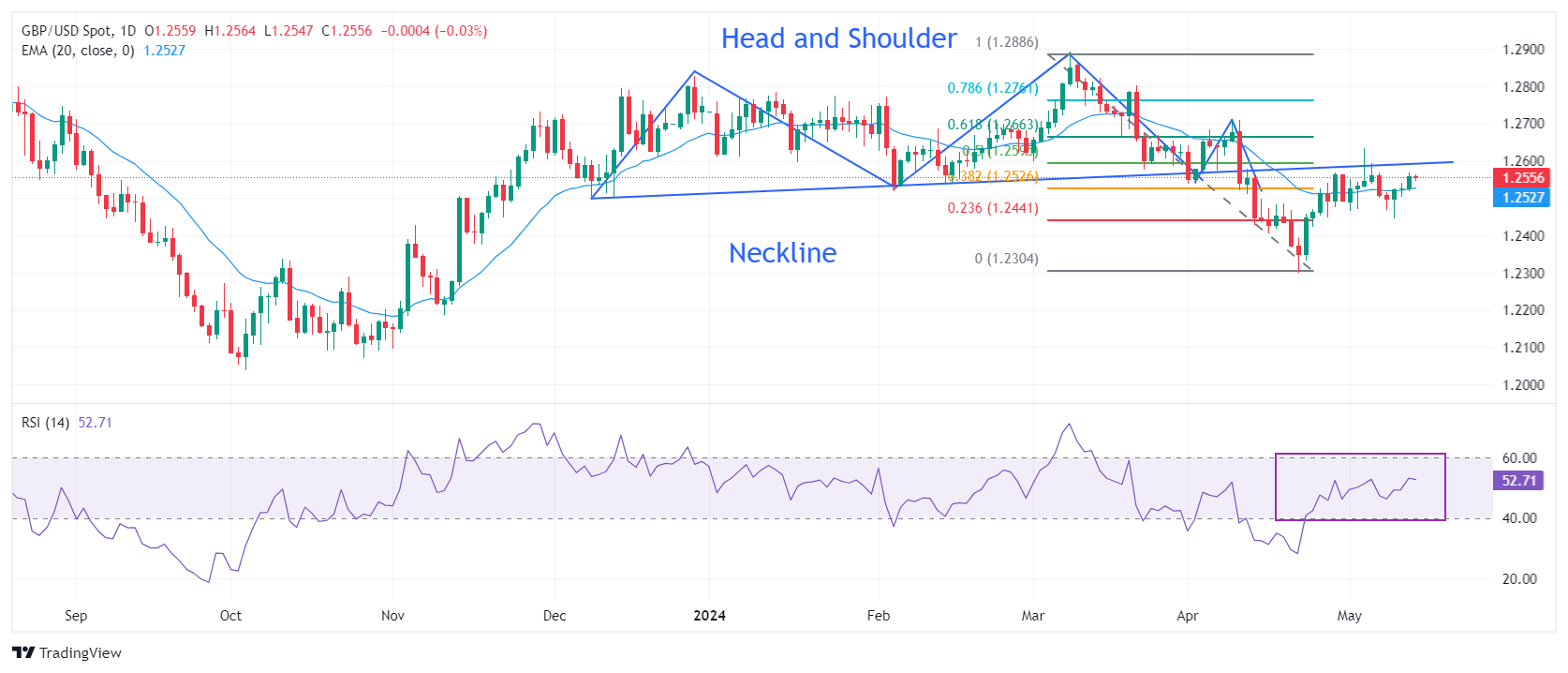- Sterling recovers sharply from 1.2500 thanks to steady wage growth in the UK.
- British employers laid off workers for the third time in a row, but wage growth remains stable.
- The US dollar is under pressure despite strong monthly PPI growth in April.
The British Pound (GBP) discovers strong buying interest near the psychological support of 1.2500 against the US Dollar in the US Tuesday session. GBP/USD rebounds as the impact of weak UK employment data United Kingdom (UK) for the three months ending in March was offset by stable wage growth. Furthermore, the fall of the US Dollar despite the rise of the US Producer Price Index (PPI) has boosted demand for the Pound.
The UK Office for National Statistics (ONS) has reported that the labor market has witnessed a decline for the third time in a row, while wage growth momentum remains stable at relatively high levels.
Following the release of the labor market data, BoE Chief Economist Huw Pill commented: “Wage growth rates remain well above what would be consistent with meeting the 2% inflation target on a sustainable basis.” He emphasized maintaining a restrictive monetary policy stance that continues to put downward pressure on the persistence of domestic inflation. Regarding interest rate cuts, he said it is reasonable to believe that during the summer there will be enough confidence to consider lowering interest rates.
Daily Market Moves Summary: British Pound Maintains Gains, While US Dollar Fails to Capitalize on US PPI Data
- The British Pound finds strong buying interest near 1.2500 against the US Dollar. The GBP/USD pair advances despite British employers laying off 177,000 workers, up from 156,000 layoffs in the December-February period. The ILO unemployment rate rises to 4.3%, as expected, from 4.2% previously. Labor market data clearly indicates that the economy is struggling to withstand the consequences of the Bank of England's (BoE) interest rate hike.
- In the current scenario, the situation looks favorable for the BoE to start reducing interest rates as price pressures are also steadily easing. However, strong wage growth fueling services inflation will remain a major concern for BoE policymakers. Average annual earnings (with and without premiums) grew by 6.0% and 5.7%, respectively, in the three months to March. Investors had expected a slowdown in average earnings, including bonuses, to 5.3%.
- In the United States, the US Dollar Index (DXY), which measures the value of the dollar against six major currencies, fell to its weekly low around 105.00, even though the PPI rose in line with estimates. The headline annual PPI and the underlying PPI, which eliminates volatility in food and energy prices, grew by 2.2% and 2.4%, respectively. The general and underlying monthly PPI grew strongly, 0.5%, compared to expectations of 0.3% and 0.2%, respectively.
- This week, the US economic calendar is packed with blue-chip data. The US Dollar's next move will be primarily driven by the Consumer Price Index (CPI) and Retail Sales data for April, due to be released on Wednesday. The consumer inflation data will influence speculation about the return to normalization of monetary policy by the Federal Reserve (Fed) starting at the September meeting.
Technical Analysis: British Pound Holds Above 20-Day EMA

The British Pound is showing strength near 1.2560 due to good short-term prospects. The GBP/USD pair remains comfortably above the 20-day EMA, which is trading around 1.2530. The pair has retraced 38.2% of losses recorded from a 10-month high around 1.2900.
Cable remains under pressure near the neck of the head and shoulders (H&S) chart pattern formed on a daily time frame. On April 12, the pair fell sharply after breaking below the neck line of the head-shoulder pattern drawn from the December 8 low around 1.2500.
The 14-period RSI is oscillating in the 40.00-60.00 range, suggesting indecision among market participants.
economic indicator
Production Price Index without food or energy (annual)
The Output Price Index ex-Food and Energy published by the Department of Labor's Bureau of Labor Statistics measures average price changes in U.S. primary markets by commodity producers in all states. transformation. Volatile products, such as food and energy, are excluded for an accurate calculation. Generally speaking, a high reading is considered positive (or bullish) for the USD, while a low reading is considered negative (or bearish).
Source: Fx Street
I am Joshua Winder, a senior-level journalist and editor at World Stock Market. I specialize in covering news related to the stock market and economic trends. With more than 8 years of experience in this field, I have become an expert in financial reporting.







